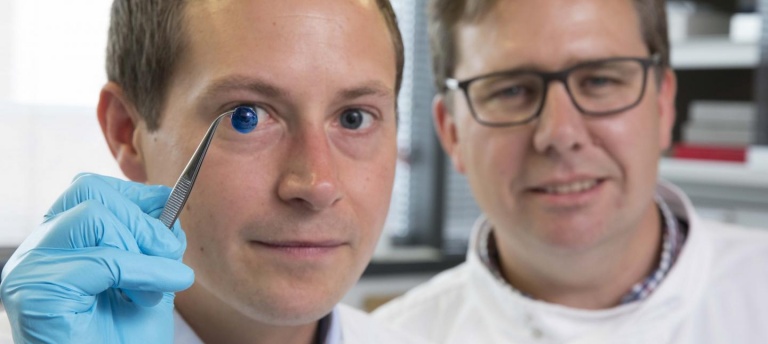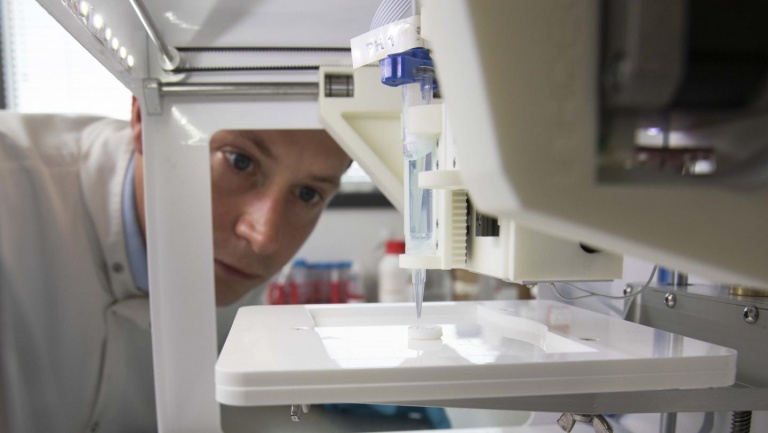Tissue engineers from Newcastle University have created what they claim are the world’s first 3D printed human corneas.
The team create a bio-ink using human corneal stromal cells from a healthy donor. These were mixed with alginate and collagen to create a solution that could be printed. Using a low-cost bio-printer, the bio-ink was extruded in concentric circles to create a shape that mimics the human cornea, a process that took just 10 minutes.
Once printed, the corneal stem cells – also known as keratocytes – were found to grow. According to the study, published in Experimental Eye Research, the keratocytes exhibited high cell viability both at day one post-printing (>90 per cent) and at day 7 (83 per cent). The breakthrough could lay the foundations for lab-grown corneas to be made available for millions of people around the world at risk from corneal blindness.
“Many teams across the world have been chasing the ideal bio-ink to make this process feasible,” said project lead Che Connon, Professor of Tissue Engineering at Newcastle University. “Our unique gel – a combination of alginate and collagen – keeps the stem cells alive whilst producing a material which is stiff enough to hold its shape but soft enough to be squeezed out the nozzle of a 3D printer.
“This builds upon our previous work in which we kept cells alive for weeks at room temperature within a similar hydrogel. Now we have a ready to use bio-ink containing stem cells allowing users to start printing tissues without having to worry about growing the cells separately.”
According to the research team, there is a significant shortage of corneas available across the world for transplant, with around 10 million people currently requiring surgery to prevent corneal blindness due to diseases such as trachoma. By first scanning a patient’s eye, the team says it will be possible to bio-print corneas that are uniquely designed for each individual, though it will be some years before the technology graduates from the lab.
“Our 3D printed corneas will now have to undergo further testing and it will be several years before we could be in the position where we are using them for transplants,” said Prof Connon.
“However, what we have shown is that it is feasible to print corneas using coordinates taken from a patient eye and that this approach has potential to combat the worldwide shortage.”
Article from The Engineer online 30th May 2018 10:50 am



